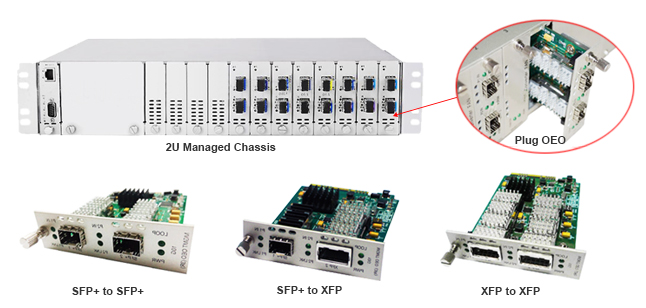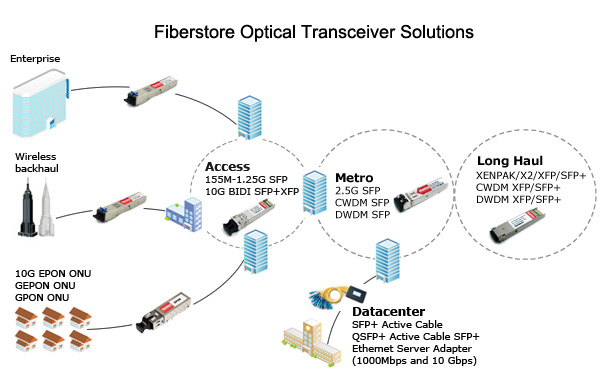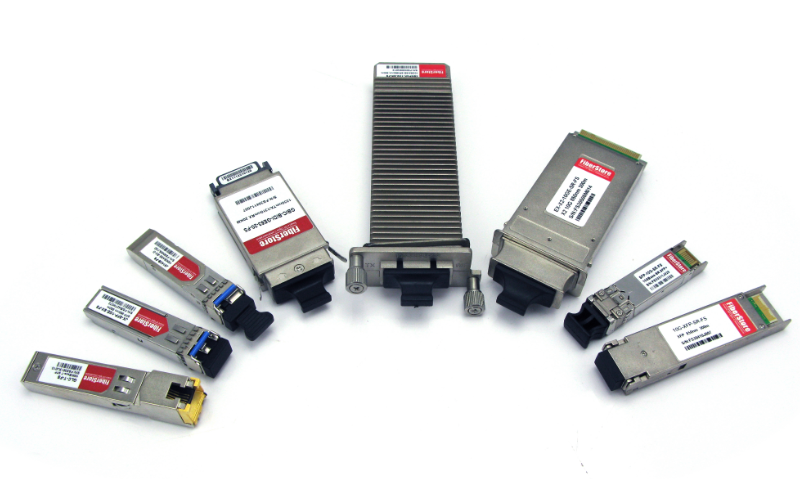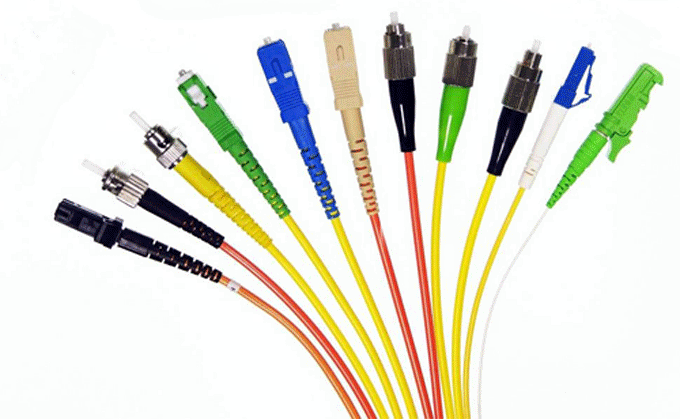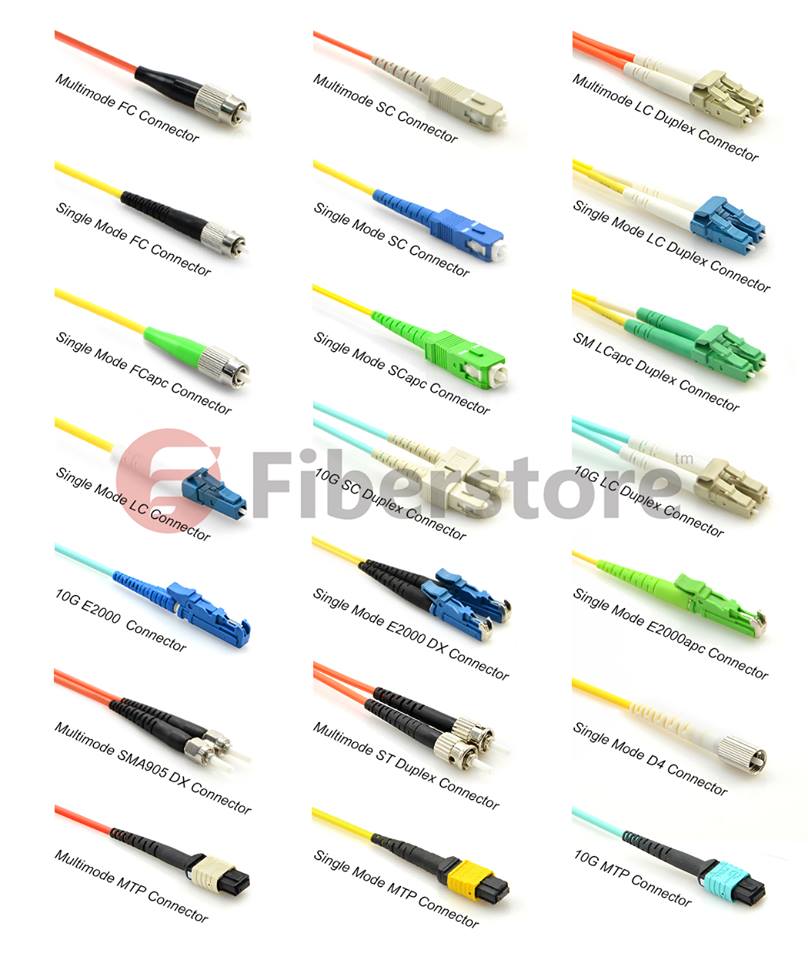Fiber optic network is gradually replacing copper network, because of its various advantages, like high speed, high density and high bandwidth, etc. Among which is that fiber optic cable can support much further distance than that of traditional copper cables like coax cable or twisted pair wire. However, in practice, the exact distance that fiber optic can support are limited by many factors. Transmission distance has become one of the biggest problems in the super fast optical communication. On one hand, with the expansion of the fiber optic network, distances for the optical links span meters to hundreds of meters and even kilometers. On the other hand, optical signal becomes weak over long distance. Stuck in this dilemma, many components and methods are being used to break the limitation of the transmission distance. This article will focus on the main factors that limit optical transmission distance.
Generally, the maximum transmission distance is limited by dispersion in fiber optic cable. There are two types of dispersion that can affect the optical transmission distance. One is chromatic dispersion, which is the spreading of the signal over time resulting from the different speeds of light rays. The other is modal dispersion representing the spreading of the signal over time resulting from the different propagation mode.
Multimode transmission is largely affected by the modal dispersion, because of the fiber imperfections, these optical signals cannot arrive simultaneously and there is a delay between the fastest and the slowest modes, which causes the dispersion and limits the performance of multimode fiber. (shown in the following picture) For single-mode fiber, it is not model dispersion but chromatic dispersion that affects the transmission distance. This is because, the core of the single-mode fiber optic is much smaller than that of multimode fiber. That’s the main reason why single-mode can transmit signals over longer distance than multimode fiber.

Fiber optic cable is the path sending the optical signals. However, most of the terminals are electronic based. The conversions between electrical signals and optical signals are necessary. This process is largely depending on fiber optic transceivers which are used in most of today’s fiber optic network. The conversion of signals is largely depend on a LED (light emitting diode) or a laser diode inside the transceiver, which is the light source of fiber optic transceiver. The light source can also affect the transmission distance of a fiber optic link.
LED diode based transceivers can only support short distances and low data rate transmission. Thus they cannot satisfy the increasing demand for higher data rate and longer transmission distance. For longer and higher transmission data rate, laser diode are used in most of the modern transceivers. The most commonly used laser sources in transceivers are Fabry Perot (FP) laser, Distributed Feedback (DFB) laser and Vertical-Cavity Surface-Emitting (VCSEL) laser. The following chart shows the main characteristics of these light sources.
| Light Source | LED | FP | DFB | VCSEL |
| Transmission Distance | Short Range | Medium Range | Long Range | Medium Range |
| Transmission Speed | Low Speed | High Speed | Very High Speed | High Speed |
| Transmission Frequency | Wide Spectral width | Medium Spectral Width | Narrow Spectral Width | Narrow Spectral Width |
| Cost | Low Cost | Moderate Cost | High Cost | Low Cost |
As the above chart mentioned, different laser source supports different frequency. The maximum distance a fiber optic transmission system can support is affected by the frequency at which the fiber optic signal will be transmitted. Generally the higher the frequency, the greater distance the optical system can support. Thus, choosing the right frequency to transmit optical signals is necessary. Generally, multimode fiber cable uses frequencies of 850 nm and 1300 nm, and 1300nm and 1550 nm are standard for single-mode system.
The bandwidth that fiber optic cable supports is another important factor that influences the transmission distance. In most case the transmission distance decreases proportionally, as the bandwidth increases. For instance, a fiber that can support 500 MHz bandwidth at a distance of one kilometer will only be able to support 250 MHz at 2 kilometers and 100 MHz at 5 kilometers. Due to the way in which light passes through them, single-mode fiber has an inherently higher bandwidth than multimode fiber.
Splices or connectors in most fiber optic system are inevitable. Signal loss can be caused when the optical signal passes through each splice or connector. The amount of the loss depends on the types, quality and number of connectors and splices.
As a conclusion, the optical transmission distance is affected by a variety of factors, like fiber optic cable type, light source of transceiver, frequency of transmission, bandwidth that the network supported, splices and connectors. During the deployment of fiber optic network, the above mentioned factors should be considered to minimum the limitations on the transmission distance. Meanwhile, components like repeater and optical amplifiers are also useful to support the long distance transmission. To break the barriers that limit the transmission distance, there is still a long way to go.
Source: http://www.fs.com/blog/what-limits-the-optical-transmission-distance.html


